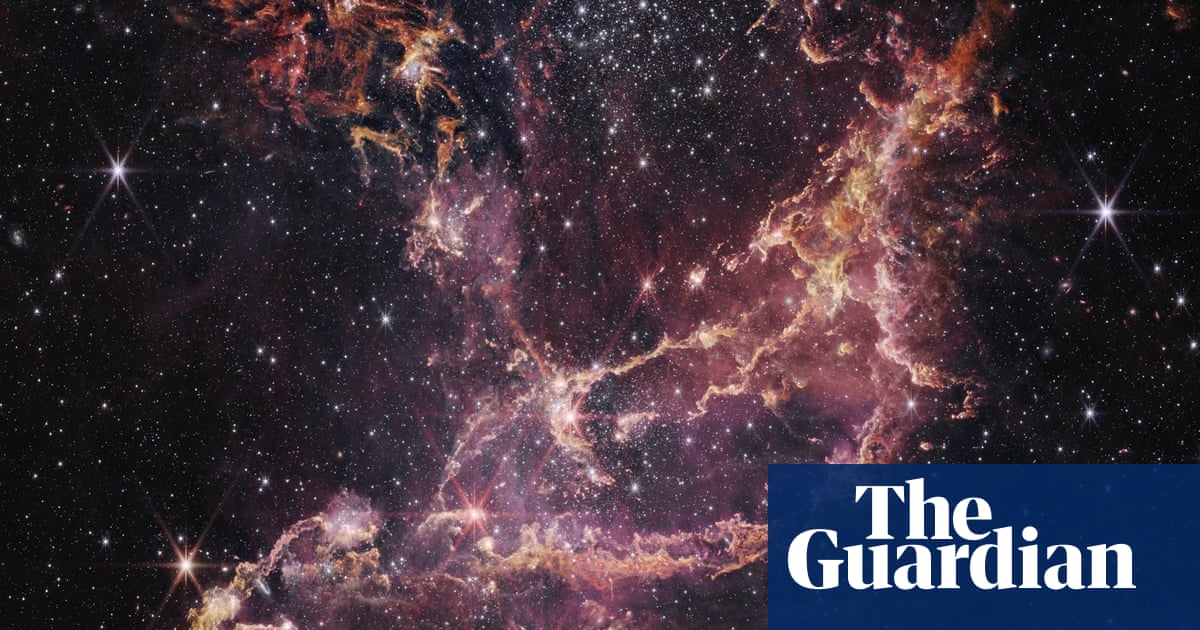
The discovery of a handful of stars at the edge of a fossil galaxy has shed new light on dark matter and provided clues of a possible early instance of galactic cannibalism, researchers say.
Tucana II is an ultrafaint dwarf galaxy about 163,000 light years from Earth and is thought to be a remnant from the formation of the earliest galaxies in the universe. It was already known to contain ancient stars, including some with a very low metal content, indicating they formed shortly after the big bang.
Now researchers say they have discovered a handful of stars far from the centre of Tucana II, revealing the galaxy to be larger than previously thought and offering fresh clues as to its formation.
Writing in the journal Nature Astronomy, researchers from the UK, US and Australia report how they identified the stars using images captured by the Australian National University 1.3m SkyMapper telescope, together with data from the Gaia satellite, which tracks stars in the Milky Way.
In total, the team were able to find and study nine new stars, almost doubling the number of stars known to be in Tucana II.
Crucially, the newly discovered stars were up to about 3,500 light years from the centre of the galaxy, compared with up to about 1,100 light years for the previously known stars, and were found to have an even lower metal content, suggesting they are older.
The team say one possibility is that the outer stars may have originated elsewhere, hinting that Tucana II may have resulted from the merger of two primitive galaxies – a process thought to have occurred in other, younger galaxies, and that has been suggested by simulations to have occurred in ancient dwarf galaxies like Tucana II.
“Our finding provides tentative evidence of such behaviour in a relic early galaxy, indicating that their formation may have also been shaped by the same processes,” the team write.
The team add that it is surprising to find stars so far from the centre of a galaxy with so few stars, and examination of their orbits ruled out the possibility that their position was down them being tugged away from the galaxy by other objects.
Instead the researchers say the most likely explanation is that the stars are held in place by the gravitational pull of the galaxy itself.
“In order to hold on to those stars and not have them be tidally stripped by the Milky Way, Tucana II needs to have a lot of mass,” said Dr Denis Erkal, an author on the study from the University of Surrey.
However, with so few stars in the galaxy that means Tucana II would have to contain about four times as much dark matter as previously thought.
The team say that means the earliest galaxies may have been far larger affairs than previously expected, and it would now be interesting to take a closer look at other ancient dwarf galaxies to see if they too have stars far from their centre.
Erkal added: “This is the first time we have been able to detect stars so far away from a dwarf and we will need to do more observations of other dwarfs to see if this is true in general or is special for Tucana II.”
Prof Justin Read, the head of physics at the University of Surrey, who was not involved in the work, said the study confirmed a long-held theory that such tiny dwarf galaxies should be surrounded by a vast, invisible “halo” of dark matter.
“It suggests that our current ideas for what dark matter is are on the right track,” he said. “While we still don’t know what dark matter is made up of, observations like this bring us closer to an answer.”
Hans-Walter Rix, the director of the Max Planck Institute for Astronomy in Heidelberg, said: “This is a really good, paper, with superb scientific craftsmanship that convincingly shows that there are stars in this tiny galaxy further out than previously known.”
But he cautioned that the proposed scenario of galactic cannibalism was at present only a theory. “The path to the results’ proposed implications for galactic cannibalism in the early universe, appears plausible and intriguing, but not unique or very cogent,” he said.












